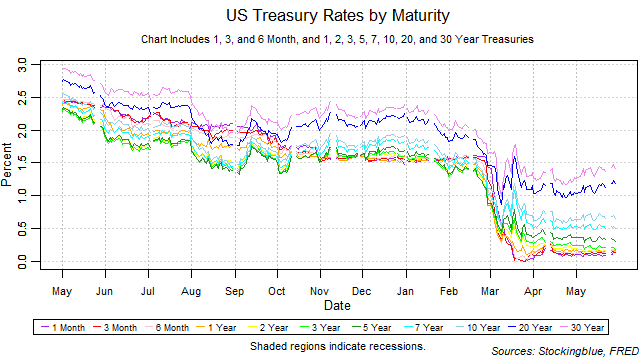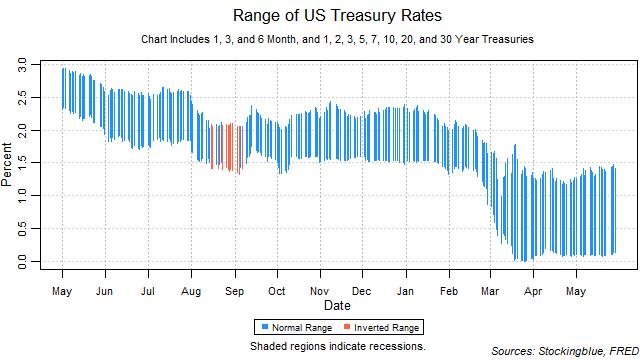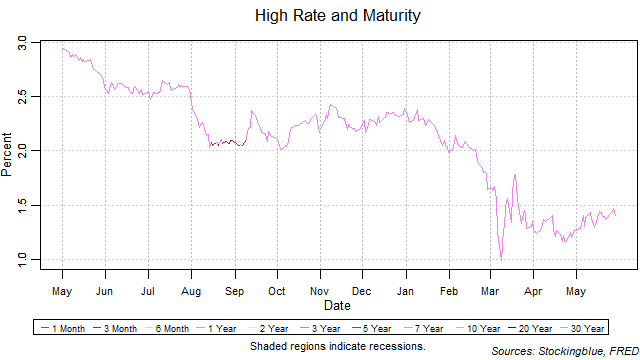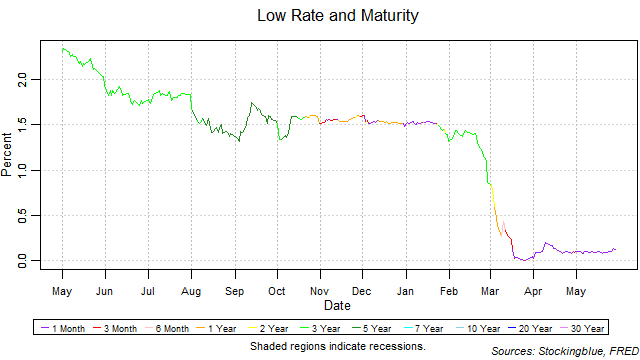
All rates except for the two, three, five, and seven-year notes rose in May. The yield curve widened from the previous month thus ending its narrowing streak of one month. The one-month bill maintained the lowest rate throughout the month. Long-term and short-term rates rose while medium-term rates rose thus decreasing the risk of an inversion brought upon by rising short-term rates. Such an inversion, if it were to happen would be a strong indicator for an upcoming recession.
Findings
- The two, three, five, and seven-year rates fell in May, all other rates rose.
- The 30-year rate saw the largest absolute growth at 0.13 points.
- On a relative basis, the six-month rate grew the most with a 63.64 percent rise.
- The five-year rate saw the largest absolute drop at 0.06 points.
- On a relative basis, the three-year rate dropped the most with a 20.83 percent drop.
- The one-month bill maintained the lowest rate throughout the month.
- The yield curve widened from 1.19 to 1.28.
Caveats
- As always, past performance is not indicative of future results.
- All figures are rounded to the nearest hundredth.
Details

The breadth of the yield curve widened over the month from a range of 1.19 to a range of 1.28. The widest range was 1.34 which was hit on May 11, May 18, and May 19 and the narrowest 1.17 which was hit on May 1. The last time the yield curve was this wide was on March 26, 2020 when it hit a range of 1.42.

The thirty-year bond held the highest rate throughout the month. It also slowly rose over the course of the month. Its highest rate for the month was 1.47 and its lowest rate for the month was 1.27. This month's high of 1.47 was last matched on March 20, 2020 when it hit 1.55.

The one-month bill held the lowest rate throughout the month. The one-month did not hit a new 12-month high extending its streak of no new 12-month highs to 14 months.
Sources
"Treasury Constant Maturity," Federal Reserve Bank of St. Louis, accessed June 4, 2020, https://fred.stlouisfed.org/categories/115.